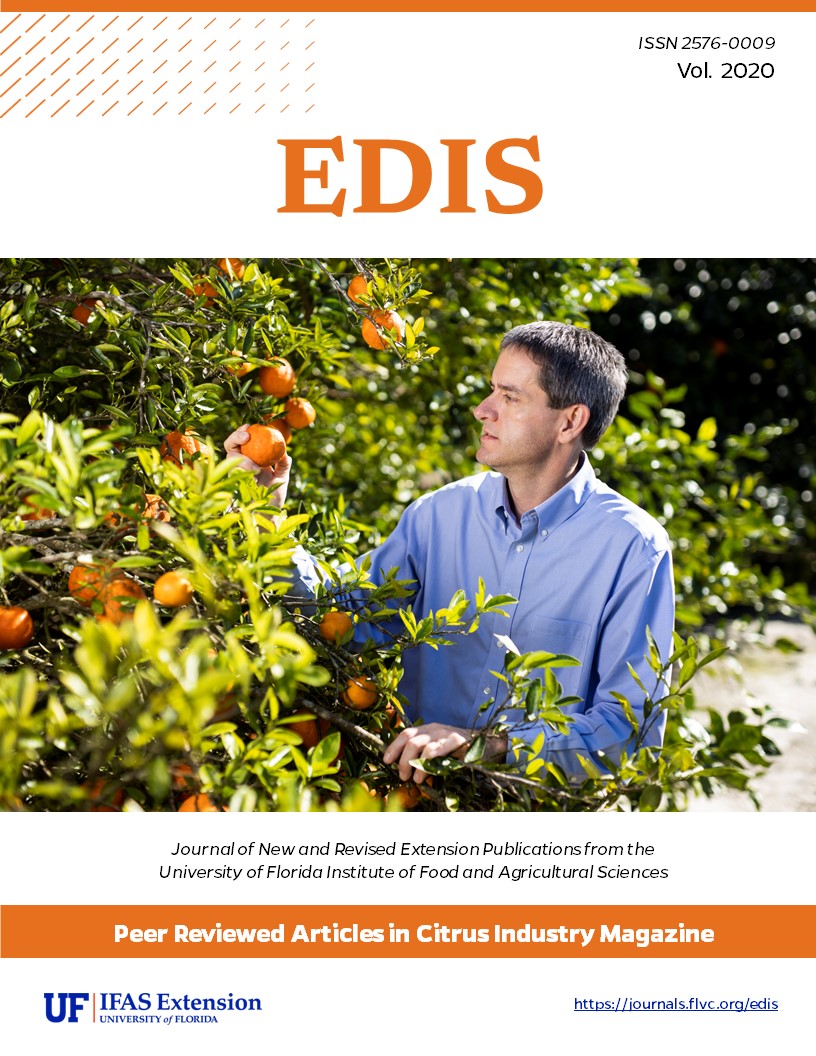Abstract
Irrigation scheduling has been one of the most important management practices to improve crop production. For citrus, there are multiple options to schedule irrigation including evapotranspiration-, plant-, and soil-based. These methods can provide different water requirement estimates based on environmental variables, plant uptake, or water content in the soil. Although each method can provide good irrigation estimates, some of them are more precise than others. The more accurately the irrigation system applies water, the more water savings are achieved. In this article we provide an overview of irrigation scheduling methods for micro irrigation systems, which includes both microsprinkler and drip irrigation. We cover the main advantages and disadvantages of each method and provide suggestions in terms of practical solutions for field applications.
References
Kisekka, I., Migliaccio, K. W., Dukes, M. D., Crane, J. H., Schaffer, B., Bayabil, H. K., Guzman, S. M. (2019). Evapotranspiration-Based Irrigation for Agriculture: Implementing Evapotranspiration-Based Irrigation Scheduling for Agriculture. EDIS - Electronic Data Information Source - UF/IFAS Extension. Retrieved from https://edis.ifas.ufl.edu/ae458
Kisekka, I., Migliaccio, K. W., Dukes, M. D., Schaffer, B., Crane, J. H. (2010). Evapotranspiration-Based Irrigation for Agriculture : Sources of Evapotranspiration Data for Irrigation Scheduling in Florida. EDIS - Electronic Data Information Source - UF/IFAS Extension, 1–4. Retrieved from http://edis.ifas.ufl.edu/ae456
Citrus App and FAWN website
https://fawn.ifas.ufl.edu/
https://crec.ifas.ufl.edu/extension/trade_journals/2016/2016_July_app.pdf
Soil moisture sensor irrigation scheduling
http://citrusindustry.net/2018/07/10/using-soil-moisture-sensors-for-citrus-irrigation/ http://citrusindustry.net/2017/07/10/understanding-soil-moisture-sensor-data/
Ferrarezi, R. S., Nogueira, T. A. R., Zepeda, S. G. C. (2020). Performance of Soil Moisture Sensors in Florida Sandy Soils. Water, 12(2), 358. https://doi.org/10.3390/w12020358

